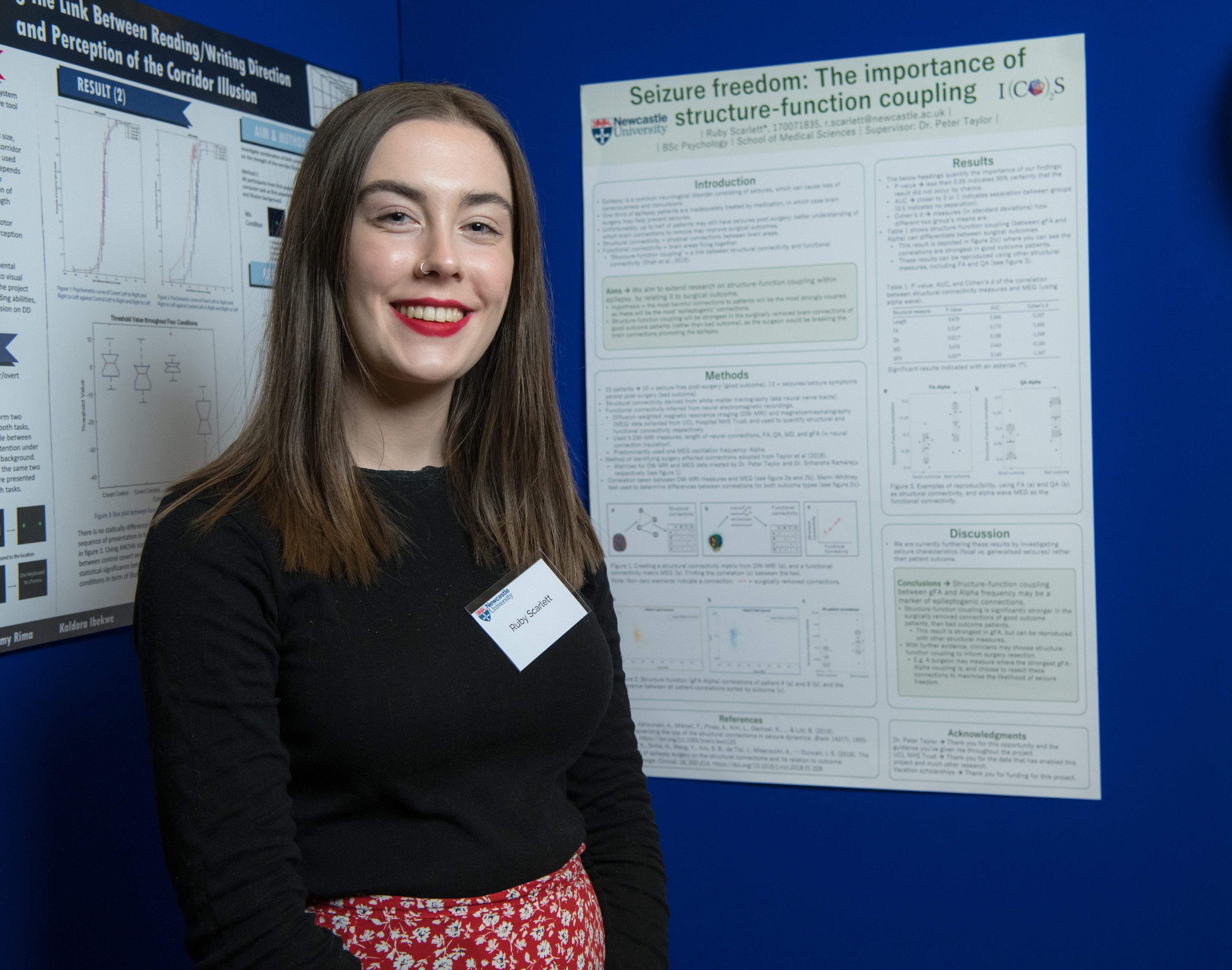2019 participants
 Ruby Scarlett
Ruby Scarlett
- BSc (Hons) Psychology with Professional Placement
- Seizure freedom: the importance of structure-function coupling
Epilepsy is a neurological disorder consisting of seizures. One-third of epilepsy patients are inadequately treated by medication, meaning brain surgery may be chosen to help prevent seizures. Up to half of patients can still experience seizures post-surgery. Better understanding of which brain connections to remove may improve these surgical outcomes. ‘Structure-function coupling’ is the link between neural structural and functional connectivity, this can be quantified through a correlation. We predict the most epileptogenic connections will be the most strongly coupled (aka correlated), but that this will only apply to seizure-free patients as the epileptogenic connections have been removed. We computationally analyse diffusion-weighted magnetic resonance imaging (DW-MRI) and magnetoencephalography (MEG) data of 23 patients. Our results suggest the coupling between neural connection insulation (gFA) and a neural frequency wave (Alpha), may be a marker for epileptogenic connections. Eventually clinicians may use this to inform brain surgery and ensure post-surgical seizure freedom.
Funding source: Newcastle University
Project supervisor: Dr. Peter Taylor
